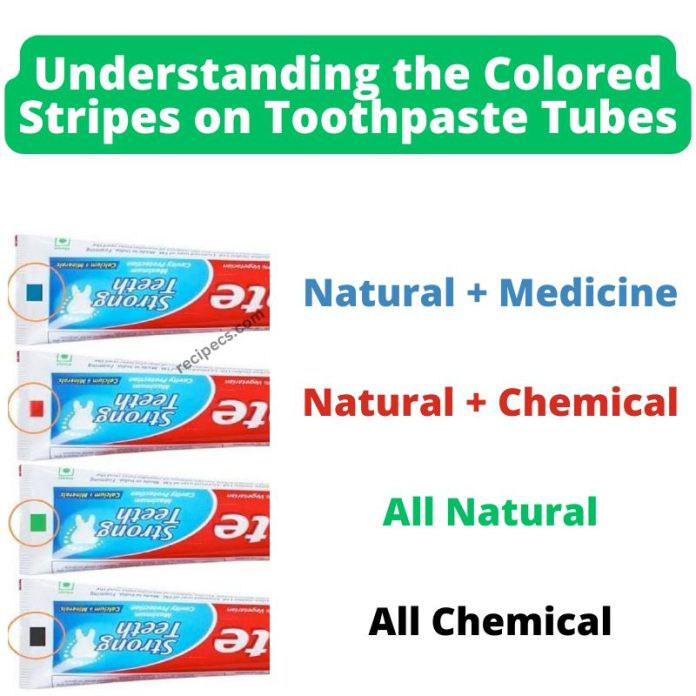The colored stripes on toothpaste tubes have sparked curiosity and debate regarding their significance. These stripes are more than just decorative; they can provide insights into the composition of the toothpaste, helping consumers make informed choices based on their oral health needs and lifestyle preferences. Here’s a breakdown of what each color typically represents:
Red Stripe: Toothpaste tubes with a red stripe generally contain a mix of natural and synthetic ingredients. This combination offers comprehensive dental care, including fluoride for cavity protection and synthetic additives that enhance the toothpaste’s effectiveness. For those concerned about chemical exposure, it’s wise to review the ingredient list to understand the balance and purposes of the components used.
Green Stripe: A green stripe indicates that the toothpaste consists entirely of natural ingredients, free from artificial chemicals, medications, or whitening agents. Such toothpastes might include elements like baking soda, essential oils, and herbal extracts, making them ideal for those who prefer an organic approach to dental care.
Blue Stripe: Toothpaste with a blue stripe suggests a formulation that combines natural ingredients with medicinal additives. These additives might include whitening agents like hydrogen peroxide or substances like potassium nitrate for sensitivity relief, catering to specific dental needs while still maintaining some natural elements.
Black Stripe: A black stripe on a toothpaste tube often signals that the product is composed entirely of artificial chemicals, with no natural components. These toothpastes are typically aimed at addressing particular dental issues like advanced whitening or intensive plaque removal. However, due to the heavy reliance on synthetic ingredients, it may be prudent to use these toothpastes selectively and consider integrating more natural options into your regimen.
Ingredient Awareness and Making Informed Choices:
While the color stripes provide a preliminary guide, it is crucial to delve deeper into the ingredient list of toothpaste to fully understand what you are using. Key ingredients to be aware of include:
- Fluoride: Essential for cavity prevention and enamel strengthening, but excessive intake can cause fluorosis.
- Triclosan: Effective against gum disease but controversial due to potential hormone disruption.
- Sodium Lauryl Sulfate (SLS): Helps in foaming and debris removal but may irritate some users.
- Preservatives and Flavorings: These enhance stability and taste but may involve artificial chemicals.
When choosing toothpaste, consider your specific dental needs, such as cavity prevention, gum health, or whitening. Whether opting for a product marked by a green stripe for its natural composition or a blue stripe for its medicinal properties, understanding the implications of these color codes and the ingredients they hint at can help you make choices that align with your health priorities and oral care goals.
Conclusion:
The colored stripes on toothpaste tubes serve as a helpful indicator of the product’s ingredient makeup, guiding consumers in selecting a toothpaste that best fits their oral health requirements and personal preferences. Whether aiming for entirely natural dental products or those that address specific conditions, being informed about the contents of your toothpaste empowers you to optimize your oral hygiene routine effectively.


